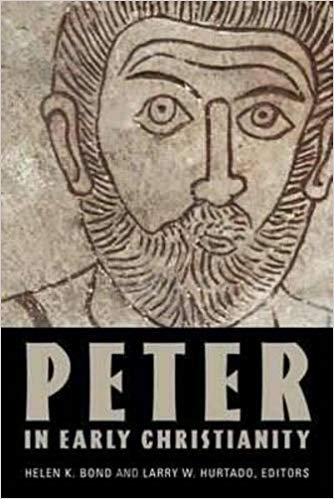Timothy Barnes’ essay treats us to a novel approach to the martyrdom of Peter. He argues he was likely burned alive wrapped in animal skins. The basis for this argument is in part a certain kind of interpretation of John 21.18-19 which is assumed to be a saying reflecting ex post facto knowledge of how Peter actually died, rather than simply being a prophecy. This may or may not be true, but Barnes does not argue his case on this, he simply assumes it. What is crucial about the verses in question is they refer to a girding of Peter as well as taking him somewhere he doesn’t want to go. The next step in his argument is to point out that crucifixion was in the nude. Victims were stripped of all their clothing. Here, again, Barnes simply assumes that must have been the case during festival season in Jerusalem, despite the fact that Jews had big issues with public nudity. Might it not be the case that Pilate, who didn’t really want Jesus executed anyway, would have acquiesced on the issue of strict nudity if the Jewish authorities had suggested that would be less objectionable to the many present at the festival at the time (not to mention the women who are said to be at the foot of Jesus’ cross including his own mother). The Gospel accounts refer to gambling for Jesus’ outer garment. Nothing is said about throwing dice for his loincloth !!!
But I digress. Barnes is right that the main meaning of the Greek verb ZONNUMI is to cloth or gird, not to uncloth. I must admit I had always taken Jesus’ words here to refer to his being bound once taken captive rather than being a reference to how he would be executed. There is a contrast in the saying between Peter fastening his belt around himself when younger and someone else fastening him in later life. Bauckham, I think rightly refers to the stretching out of his hands as a possible reference to what happens when a person is about to be nailed to a cross beam. Barnes cites Cullmann as suggesting that the verb in question never means to bind, it means to gird. The basic contrast in Barnes’ view is between you gird yourself, and someone else girds you. In short, Barnes argues checking all the later apocryphal materials as well that Peter was burned alive in Rome, and these traditions also indirectly make clear, that Peter had actually been to Rome, as does the cult that grew up around the burial spot of Peter said to be on Vatican hill. Barnes argues that Peter died in 64, as a result of the fires in Rome, and that the testimony that Nero liked to both tie people to a stake and then turn them into Roman candles, is likely what happened to Peter— a retaliation for the assumed setting of fires in Rome. This is an interesting argument, which of course is at odds with the martyrdom of Peter account in the Acts of Peter (late second century) that says he was crucified upside down.












